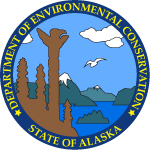| Action Date |
Action |
Description |
DEC Staff |
| 1/25/1981 |
Site Added to Database |
Polychlorinated biphenols contaminant. |
Former Staff |
| 2/1/1986 |
Preliminary Assessment Approved |
Environmental assessment by Corps of Engineers sent describing 3 areas within Fort Tidball on Long Island that need to be addressed for cleanup. The headquarters site has 3 transformers marked "G.E. Pyranol". Soil PCB levels were measured at 152,000 ppm near these transformer. |
Former Staff |
| 5/6/1986 |
Update or Other Action |
(Old R:Base Action Code = MS - Monitoring/Sampling). Summary of Hazardous waste sampling at DERA 3200 Long Island. Extremely high levels of PCBs were found in all samples taken in the area of the 3 transformers at the headquarters area. This included a sample collected at 2' underground of the transformers and a surface sample collected 25 yards from them. PCB 1260 levels varied from N.D. to 88,000 ppm. |
Former Staff |
| 1/25/1991 |
Update or Other Action |
(Old R:Base Action Code = MS - Monitoring/Sampling). HLA sampling plan for site sent in. Three areas are identified: Castle Bluff Garrison area, garage area, headquarters area. The headquarters area served as Fort Tidball HQ during active military operations. The sampling plan provides procedures to identify and quantify 1) hazardous and toxic wastes in shallow subsurface soils, surface water and shallow groundwater, and 2) asbestos in building materials. |
Former Staff |
| 5/9/1991 |
Site Ranked Using the AHRM |
Initial ranking. |
Former Staff |
| 8/21/1991 |
Update or Other Action |
Updated after file review. |
Former Staff |
| 8/15/1994 |
Update or Other Action |
Phase I Remedial Investigation conducted. |
Former Staff |
| 2/21/1996 |
Update or Other Action |
(Old R:Base Action Code = RIFS - Remedial Investigation / Feasibility Study). RIFS action added by Shannon and Wilson on 3/13/97, based on FUDS Site Summary dated 2/21/96. Summary shows the RIFS for limited RI, including drilling, sampling and final report. Mod. for mob/demob and additional disposal of RCRA waste from Investigation Derived Wastes. Field work to be completed 17 May 94. |
S&W-Miner |
| 8/15/1997 |
Interim Removal Action Approved |
Interim Removal Action Approved this date. |
Katarina Rutkowski |
| 7/15/1998 |
Update or Other Action |
Phase II Remedial Investigation Performed in 1998. Report produced in October 1999. |
Jeff Brownlee |
| 11/29/1999 |
Update or Other Action |
Site reranked based on Phase I and II info. |
Jeff Brownlee |
| 4/24/2001 |
Site Ranked Using the AHRM |
Changed Site Access Value from 2 to 12 due to existence of security fencing and fact that site is on an island. |
Former Staff |
| 10/4/2001 |
Update or Other Action |
Fort Tidball (Long Island) was inspected with representatives from the State Historic Preservation Office (SHPO), Lesnoi Native Corporation, Alaska State Parks, COE, local historic museum and two archeologists. SHPO and State Parks intend to inventory all the buildings and decide which structures should be protected or saved from the planned building demolition/debris removal. There are several small areas of soil contamination, mostly from day tanks containing heating oil. Staff did not observe any areas of visually impacted contamination or sites where soil contamination would likely be impacting surface water bodies. Most sites with contamination are road accessible. |
Jeff Brownlee |
| 11/5/2001 |
Update or Other Action |
Staff reviewed a draft remedial investigation report. Several areas of previously known soil and groundwater petroleum contamination were sampled. Several sites were proposed for Method 3 and the 10x’s rule closure, however most sites are easily accessible from the road system, so the use of alternative cleanup levels will need to be negotiated with the land owner and meet the needs of future water needs and land use scenarios. |
Jeff Brownlee |
| 1/29/2003 |
Update or Other Action |
Staff reviewed an Interim Removal Action Reports for Long Island. About 400 cubic yards of diesel range organic (DRO) impacted soils were removed from Long Island from ten different subareas |
Jeff Brownlee |
| 9/18/2003 |
Meeting or Teleconference Held |
CS staff attended and participated in a Kodiak Island Borough assembly meeting and public open house for FUDS on Kodiak. The COE updated the assembly on the status of current and upcoming projects. There was minimal community interest at the open house. |
Jeff Brownlee |
| 12/4/2003 |
Update or Other Action |
CS staff reviewed a draft proposed plan for a FUDS on Kodiak Island. The former site known as Fort Tidball was a World War II military base that operated from 1942 to 1945. Seven areas of concern were investigated on the island with several phases of environmental investigation and removal. The major type of contamination was DRO in soil from heating oil tanks. There were also isolated areas of PCB soil contamination from electrical components. The proposed plan included the majority of technical components for a public review; however the document needed some reorganization and clarification |
Jeff Brownlee |
| 2/20/2004 |
Proposed Plan |
CS staff participated in a public open house and Kodiak Island Borough assembly meeting to present the Proposed Plan for Long Island for public review. Long Island is about six miles east of the town of Kodiak and was the location of a former WWII army base (Fort Tidball). There were a couple questions from assembly members about the contamination that remains on the island (Alternative cleanup level for diesel in soil) and the previous cleanups. There was little interest from the community at the open house |
Jeff Brownlee |
| 2/25/2004 |
Update or Other Action |
Staff reviewed an interim removal action report. Cleanup is complete at Long Island. A building demolition/debris removal project was completed this summer along with environmental cleanup at several sites. Approximately 400-cubic yards of mostly DRO impacted soil was removed from the island for thermal treatment. Most of the contamination was associated with small (500-gallon) heating oil above ground storage tanks. About five well points will require further monitoring as there are chemical concentrations over Table C values for DRO and lead. An ACL for DRO soil contamination on Long Island was proposed and has been preliminarily approved by the DEC. We are currently reviewing the final ACL proposal. |
Jeff Brownlee |
| 9/20/2004 |
Update or Other Action |
Contaminated Sites staff reviewed a draft decision document for Long Island near Kodiak. Long Island is a FUDS formerly known as Fort Tidball, an army base during World War II. The island had 32 separate contaminated sites. About half were closed under Method 2 and the remainder under Method 3 primarily for DRO in soil. The maximum DRO concentration remaining on island is approximately 950 mg/kg. Two separate Total Organic Carbon (TOC) values were used to reflect two different geologic regimes on the island |
Jeff Brownlee |
| 10/27/2004 |
Meeting or Teleconference Held |
staff participated in a Kodiak Island Borough Assembly meeting to discuss the status of Formerly Used Defense Sites on the island. The Corps of Engineers also participated at the meeting. The DEC and COE contractor also participated in a public open house to solicit comments on the cleanup work being done on Kodiak. Turnout was light as is typical in Kodiak |
Jeff Brownlee |
| 5/18/2005 |
Update or Other Action |
Contaminated Sites staff reviewed a pre-final Decision Document for the Formerly Used Defense Site on Long Island. The island was used for an army base called Fort Tidball during WWII. The primary Contaminant of Concern (COC) was Diesel Range Organics (DRO) in soil. An approximately 400 cubic yard PCB spill in soil was also cleaned up. DRO impacted soils at several locations on the island chiefly through leaking fittings or spills from USTs and ASTs used to heat buildings. There are seven main use areas on the island with about three dozen sub-sites. Several Interim Removal Actions have been completed over the past twelve years. The preferred remedy for the remaining contamination is implementing Method 3 cleanup levels and institutional controls. The site status would be No Further Remedial Action Planned |
Jeff Brownlee |
| 6/14/2005 |
Update or Other Action |
File number issued 2610.38.001. |
Aggie Blandford |
| 6/17/2005 |
Meeting or Teleconference Held |
Contaminated Sites staff participated in a public open house for Formerly Used Defense Sites on Kodiak Island. Staff also conducted several site inspections. Proposed Plans for the Little Navy Annex Site and the Cape Chiniak Site were introduced at the Kodiak Island Borough assembly meeting. The open house had a moderate amount of interest with several community members stopping by to discuss sites and pick up information. |
Jeff Brownlee |
| 8/30/2005 |
Update or Other Action |
Contaminated Sites staff participated in site inspections at several Formerly Used Defense Sites on Kodiak Island. The EPA and the Corps of Engineers contractor also participated in the inspections. Sites visited include Cape Chiniak, Long Island, Millers Field, Asphalt Disposal Area, Drury Gulch, Building A-711, and the Airport Staging Area |
Jeff Brownlee |
| 9/13/2005 |
Institutional Control Record Established |
Twenty two minor petroleum sites at five areas are institutionally controlled at method 3 of 1,200 mk/kg. Diesel Range Organics. Remaining areas are No Further Remedial Action Planned. |
Jeff Brownlee |
| 9/13/2005 |
Record of Decision |
Twenty two minor petroleum sites at five areas are institutionally controlled at method 3 of 1,200 mk/kg. Diesel Range Organics. Remaining areas are No Further Remedial Action Planned. |
Jeff Brownlee |
| 1/19/2006 |
Meeting or Teleconference Held |
Contaminated Sites staff participated in a Kodiak Island Borough Assembly meeting to discuss the recent documents available for the review and the field work the COE will be doing this summer in the island. The COE and DEC were interviewed on public radio to discuss the Kodiak projects and overall contaminated site cleanup process. There was also a public open house to give community members the opportunity to bring up concerns and ask questions in person. As typical for Kodiak turn out was light |
Jeff Brownlee |
| 5/24/2006 |
Update or Other Action |
Staff participated in site inspections with a Corps of Engineers Pacific Ocean Division representative on Kodiak Island. Several Formerly Used Defense sites were toured by helicopter including Burma Road, Long Island, Buskin Lake, Cape Chiniak Tracking Station and Little Navy Annex |
Jeff Brownlee |
| 6/1/2006 |
Meeting or Teleconference Held |
Staff participated with the Corps of Engineers (COE) and their contractor in a public open house for the Formerly Used Defense Sites on Kodiak Island. We also attended the Kodiak Island Borough Assembly meeting. The COE gave a briefing on the work planned for this summer. The open house showed light interest which is normal for Kodiak. Staff also met with Coast Guard environmental personnel and inspected several sites on the Coast Guard Base |
Jeff Brownlee |
| 6/14/2007 |
Meeting or Teleconference Held |
Contaminated Sites staff participated in public meetings and site inspections for the Kodiak Formerly Used Defenses Sites (FUDS) on Kodiak Island. Three FUDS are active this summer including a continuing PCB removal at Drury Gulch, a below water smear zone excavation at Building A-711 and a biosparge pilot test at the Fire Training Pit. The Corps of Engineers and their contractor participated in a public open house and Kodiak Island Borough assembly meeting. Turnout was light for the open house, which is typical for Kodiak |
Jeff Brownlee |
| 10/5/2015 |
Meeting or Teleconference Held |
Representatives of Great Land Trust (GLT), contacted ADEC Contaminated Sites staff and requested a site status update meeting for the Ft. Tidball FUDS. GLT informed ADEC that it is working with the Lesnoi Corp. (landowner), as they are evaluating and considering the prospective development of a public use land easement for their Long Island property. ADEC staff hosted and participated in a meeting with GLT representatives to discuss the history and current status of the Ft. Tidball FUDS and related contaminated sites issues that are associated with/located on Long Island. GLT informed ADEC that the Lesnoi Corp. had conducted a NALEMP-funded Step III Preliminary Assessment in 2015, and that the current primary objective of their evaluation was to determine whether or not any residual/legacy contamination issues associated with the FUDS would impact development of the prospective easement. |
Curtis Dunkin |
| 10/5/2015 |
Institutional Control Compliance Review |
As a follow on action to ADEC's Oct. 5, 2017 site update meeting with representatives from Great Land Trust, ADEC contacted the Army Corps of Engineers (Corps) with an informal request to provide ADEC with documentation of the Corps' development and filing of the Institutional Controls (ICs) and Notice of Environmental Contamination (NEC), both of which were required by the 2005 Decision Document, for the residual contamination associated with the Ft. Tidball FUDS that was left in place on Long Island. The Corps confirmed that it did not have the subject documents on file and indicated that it did not have record that the ICs and/or NEC had been developed and/or filed with the landowner. As a result, ADEC Contaminated Sites staff conducted an internal preliminary review of the adequacy and protectiveness of the selected/implemented remedies, based upon the available historical remedial investigation records and in conjunction with the 2005 Decision Document. |
Curtis Dunkin |
| 12/8/2015 |
Meeting or Teleconference Held |
ADEC Contaminated Sites staff hosted a meeting with representatives from Great Land Trust (GLT) to discuss the status and preliminary determinations of ADEC's general internal review of the remedies and protectiveness of the Ft. Tidball FUDS based upon the available historical records and the 2005 Decision Document. One of the action items from the meeting was for GLT to confirm with the landowner (Lesnoi Corp.) re: whether or not the Institutional Controls and/or Notice of Environmental Contamination (both of which were conditional requirements per the remedies selected and approved in the 2005 DD), had been previously developed by the Corps of Engineers and recorded with the landowner. GLT representatives also informed ADEC that the Lesnoi Corp. had performed a NALEMP Step III Preliminary Assessment of the Ft. Tidball FUDS in 2014/15. |
Curtis Dunkin |
| 4/20/2016 |
Document, Report, or Work plan Review - other |
ADEC received a copy of the 2015 NALEMP Step III Preliminary Assessment (PA) Report from representatives of Great Land Trust (GLT). The 2015 PA was conducted by the Tangirnaq Native Village in conjunction with the Native American Lands Environmental Mitigation Program; the report summarizes the effort's review of historical records and existing above ground site conditions associated primarily with building demolition and debris removal at the former Ft. Tidball FUDS areas of concern. |
Curtis Dunkin |
| 4/5/2018 |
Update or Other Action |
ADEC approved the Army Corps of Engineers Memorandum For Record (MFR, dated March 27, 2018) to the 2005 Decision Document. ADEC also concurred with and signed the Notice of Environmental Contamination (NEC, dated April 5, 2018) that was developed by the Army Corps of Engineers and the Lesnoi Corporation. The purposes of the MFR and the NEC respectively, were to revise the determinations and site management requirements of the 2005 Decision Document; and to develop and records an agreement between stakeholders that would document and outline the site management requirements for the residual contamination that is left in place. Copies of the MFR and NEC are uploaded onto ADEC's database. |
Curtis Dunkin |
| 4/25/2018 |
Cleanup Complete Determination Issued |
|
Curtis Dunkin |
| 7/13/2020 |
Document, Report, or Work plan Review - other |
ADEC reviewed the Time Critical Removal Action-Action Memorandum (dated June 2020 and received by ADEC on July 1, 2020), and submitted comments to the US Army Corps of Engineers. The TCRA-AM summarizes the site status and USACE's plan to conduct a focused TCRA of the PCB-contaminated soil at the former headquarters site. |
Curtis Dunkin |
| 10/2/2020 |
CERCLA Removal Action Plan |
ADEC reviewed the revised draft September 2020 Time Critical Removal Action Work Plan and submitted comments to the Army Corps of Engineers. |
Curtis Dunkin |
| 10/16/2020 |
CERCLA Removal Action Plan |
ADEC participated in a comment resolution meeting, in conjunction with multiple rounds of response to comments reviews with the Army Corps of Engineers (USACE) for the draft 2020 TCRA Work Plan. ADEC submitted approval for the RTCs and for USACE to finalize the work plan. |
Curtis Dunkin |
| 11/6/2020 |
CERCLA Removal Action Plan |
ADEC received the final 2020 Time Critical Removal Action Work Plan from the Army Corps of Engineers and submitted written approval of the document and for the Corps to implement the work plan in the field. |
Curtis Dunkin |
| 2/4/2021 |
Offsite Soil or Groundwater Disposal Approved |
ADEC reviewed and submitted clarification comments and revision requests to the Army Corps of Engineers (USACE) for two separate ADEC-Contaminated Media Transport Approval forms for TSCA-(35 tons) and Non-TSCA (1,700+tons) PCB-contaminated soils that were excavated and containerized as part of the 2020-21 FUDS TCRA effort. Upon receiving responses and revised forms, ADEC submitted approval for USACE to transport the soils offsite for disposal. ADEC is awaiting the draft TCRA report which USACE estimates will be distributed to stakeholders in May/April 2021. |
Curtis Dunkin |
| 7/19/2021 |
Document, Report, or Work plan Review - other |
ADEC reviewed the draft 2021 Time Critical Removal Action Report and submitted comments to the Army Corps of Engineers. |
Curtis Dunkin |
| 12/16/2021 |
Document, Report, or Work plan Review - other |
ADEC reviewed responses to comments including addendum figures and supporting information for the draft 2021 TCRA Report and submitted review determinations to the Army Corps of Engineers. |
Curtis Dunkin |
| 3/15/2024 |
Document, Report, or Work plan Review - other |
ADEC reviewed the draft 2024 Headquarters Area of Concern Groundwater Investigation Work Plan and submitted review comments to the U.S. Army Corps of Engineers. |
Curtis Dunkin |
| 9/10/2025 |
Meeting or Teleconference Held |
ADEC staff participated in a public meeting presented by the U.S. Army Corps of Engineers (USACE) at the Kodiak Fisheries Research Center located in Kodiak, AK. Representatives from the USACE Formerly Used Defense Site (FUDS) program presented history and status updates of site characterization and cleanup work as well as project prioritization and implementation schedules for future work associated with all active FUDS properties located on Kodiak. |
Curtis Dunkin |




